The rapid pace of technological advancements is reshaping every industry, and the content industry is no exception. To stay competitive and deliver high-quality, engaging content, understanding emerging trends is crucial. Let’s explore some of the key content trends that will dominate 2025 with Thu Do Multimedia!
1. The power of AI
AI is no longer a stranger to most of us. It’s a topic that has dominated social media and mainstream news for years and years!
For content creators like, AI has emerged as a game-changing tool. With its user-friendly interface and widespread accessibility, AI has significantly streamlined workflows and boosted productivity:
Highly Personalized Content: AI can deeply analyze user data to create content that perfectly aligns with each individual’s preferences and needs. This enhances engagement and marketing campaign effectiveness.
Diverse Content Creation: Beyond text, AI can generate high-quality images, videos, and audio, opening up countless new creative possibilities for content creators.
SEO Optimization: AI-powered SEO tools analyze keywords and optimize content to rank higher on search engines, increasing content reach.
Time and Cost Savings: AI automates many repetitive tasks, reducing errors and shortening content production time.
With such features, AI has been and is still one of the top trends in innovation. And in 2025, who knows what AI can do?
How should you be using AI in your personal work
While AI has become a valuable tool for content creation, it’s essential to remember that human creativity and originality remain irreplaceable.
While AI can assist with tasks like generating ideas, conducting research, and even writing drafts, it’s crucial to maintain your unique voice and style.
This distinctiveness and weirdness will set your content apart from the competition and resonate with your audience, which make you SPECIAL!
There are a plethora of ways to use AI tools in your content creation process, but here are some ways I’m using AI as a writer:
- Generate ideas, especially about range that you’ve never heard of before
- Draft article outlines
- Rephrase paragraphs or phrases with a specific tone
- Repurpose blog posts into social media posts
Say goodbye to burnout and hello to a healthier work-life balance. AI can help you streamline your workflow, reduce stress. Your back will thank you after!
Work Smarter with these 4 Best AI tools
AI may greatly simplify your work as a writer, from ideation to outline creation to content reuse.
Naturally, artificial intelligence won’t perform your finest work for you. We are aware that the strangeness and wonder of human creation cannot yet be fully replicated. However, AI can relieve you of some of the workload so you can concentrate on developing your content.
However, it can be challenging to determine which AI tools and software are worth your time (and money) given the constantly expanding array of options available on the market, all of which claim to be able to help you generate, streamline, and automate your writing process.
Buffer’s AI Assistant
Best AI writing tool for social media content
The AI Assistant from Buffer was designed with social media in mind. Buffer allows you to schedule your material as you generate it, which streamlines the content production process (no more copy-pasting to different social networks, which is particularly tiresome if you’re cross-posting to numerous platforms).
The fact that Buffer’s AI Assistant is aware of the subtleties of every social media network is its best feature. For instance, you won’t go over your character limit when creating content for X (previously Twitter). Additionally, it has been trained to make Instagram posts more lighthearted and LinkedIn posts more formal.
The assistant’s editing buttons are another time-saving tool. Simply pick Rephrase, Shorten, Expand, More informal, or More formal to come closer to the information you want without having to type further instructions to the Assistant to change your post.
Another time-saver is that you can utilize these buttons to edit certain sections of your posts rather than rewriting them from scratch.
Beyond these basic functionalities, here are some of my favorite use cases for writers who want to develop their own brands and produce more material for social media.
Personalized ideas

As a social media manager and creator, I can tell you that social media writer’s block is far worse than ordinary writer’s block. Maybe it’s the sheer amount of material you need to produce. Who knows?
Thankfully, I’ve discovered Buffer’s AI Assistant, thus this is no longer an issue. I go to Buffer’s Create Space, where I brainstorm all of my post ideas, and click the Generate Ideas button when I’m at a loss for what to post.
The assistant will ask you two questions in order to better understand what will appeal to your audience:
- What do you do for a living?
- Who are you trying to reach?
After that, the Assistant will produce a flow of concepts for you to evaluate, one at a time.me. On each one, you’ll be able to hit Use it, which will open a pre-filled post creation window, or Try another to regenerate.
Repurpose other posts and content

One of the best use cases for this tool is the ability to repurpose content that has performed well or rewrite it to be more appropriate for another platform.
I often use the latter to rework posts I’ve created for LinkedIn into a Twitter thread, something that took me ages to develop!
Something else I’m leaning into right now is repurposing older social media posts into something fresh. There’s a fair chance a huge chunk of my audience missed certain posts, and those who saw them likely won’t remember if they did (especially if the original post has been given a glow-up).
I also use the AI Assistant to summarize entire blog posts I’ve written into bite-sized social snippets — another thing that used to take me ages.
Free and limitless on all Buffer plans
Unlike many other AI writer tools, especially those built for social media, there’s no ‘credits’ system in place. The AI Assistant is free to use, as is Buffer (for up to three channels). When it comes to the number of prompts and rephrases you can submit, the limit does not exist!
Learn more about Buffer: https://buffer.com/
Jasper
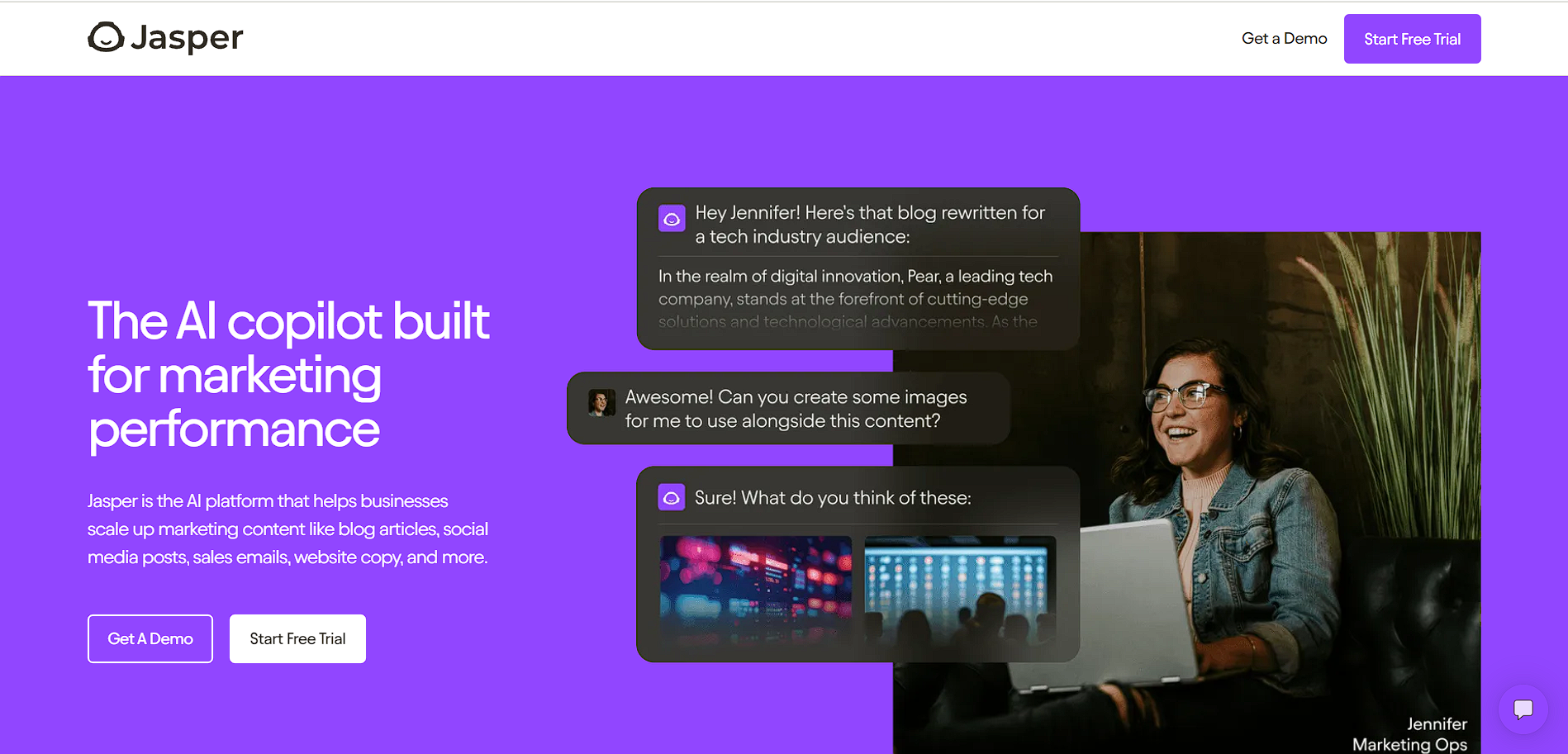
As one of the first AI writing tools to market (then known as Jarvis), Jasper has had time to hone its UI and feature set.
Along with AI text generation for a plethora of specific projects — everything from landing pages to full-on marketing campaigns, Jasper also boasts Remix (a dedicated tool for reworking content via a link, uploaded document, or text), Chat (a back-and-forth chat box with the AI to help you brainstorm or hone ideas), plus a Chrome extension.
Jasper has moved beyond just copywriting and now aims squarely at marketing teams. The collaborative features mean everyone can jump into various documents and view projects and campaigns at a glance with nifty Kanban and calendar views. Managers and editors can also add in things like brand voice and style guide documents to ensure things stay on track across all content pieces.
When writing, Jasper’s intuitive system will ask you to enter a simple prompt or choose from a list of templates. From there, you’ll be asked for more information upfront, which differs depending on what you’re working on. Before generating your draft, you can add things like your target audience, specific points to include, and more — but the AI can predict these things so well that this usually just involves choosing from some recommended options.
While Jasper is intuitive and great for teams, it’s worth noting that the foundation of the tool is the same as most of the other (cheaper) options on this list. Jasper “uses over a dozen language models,” but the marketing copy generated is similar to what you’ll get from ChatGPT and other AI writing software.
Copy.ai
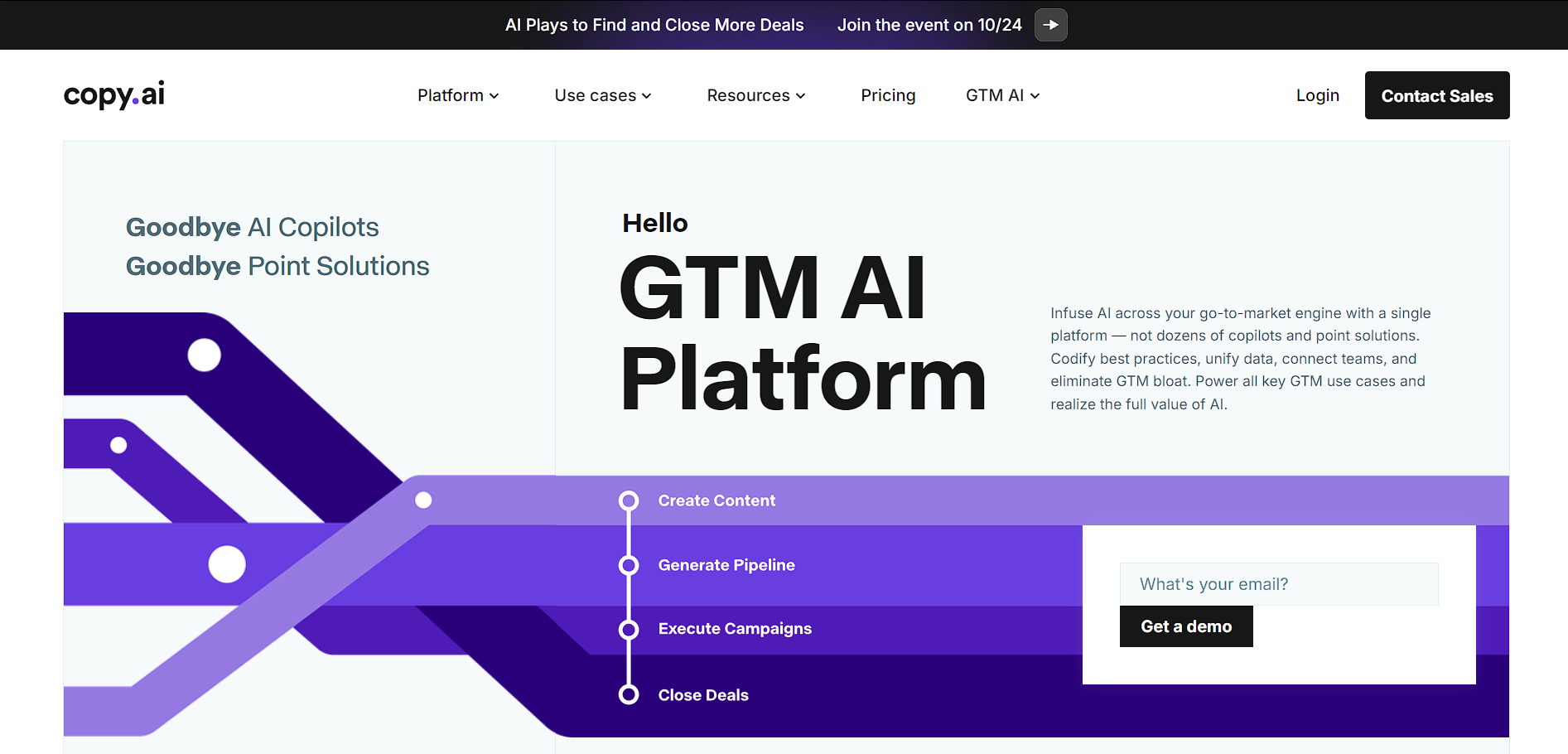
Copy.ai is another tool on this list that has outgrown the content generation mold it was born into. The multifaceted tool aims to help Sales and Marketing teams go from “go-to-market bloat to velocity.”
What that means in practice is a slick tool a lot like Jasper. However, Copy.ai places more emphasis on repeatable workflows that will help save marketers (or salespeople) time — think “repurpose this blog post into a LinkedIn post,” “Check this copy for plagiarism,” or “Find prospects at company X.”
You can choose these workflows from an impressive library or customize your own. The finished product will look something like a flowchart, where each step in the process is effectively an AI prompt (or a series of them).
ChatGPT
Best free AI writing tool
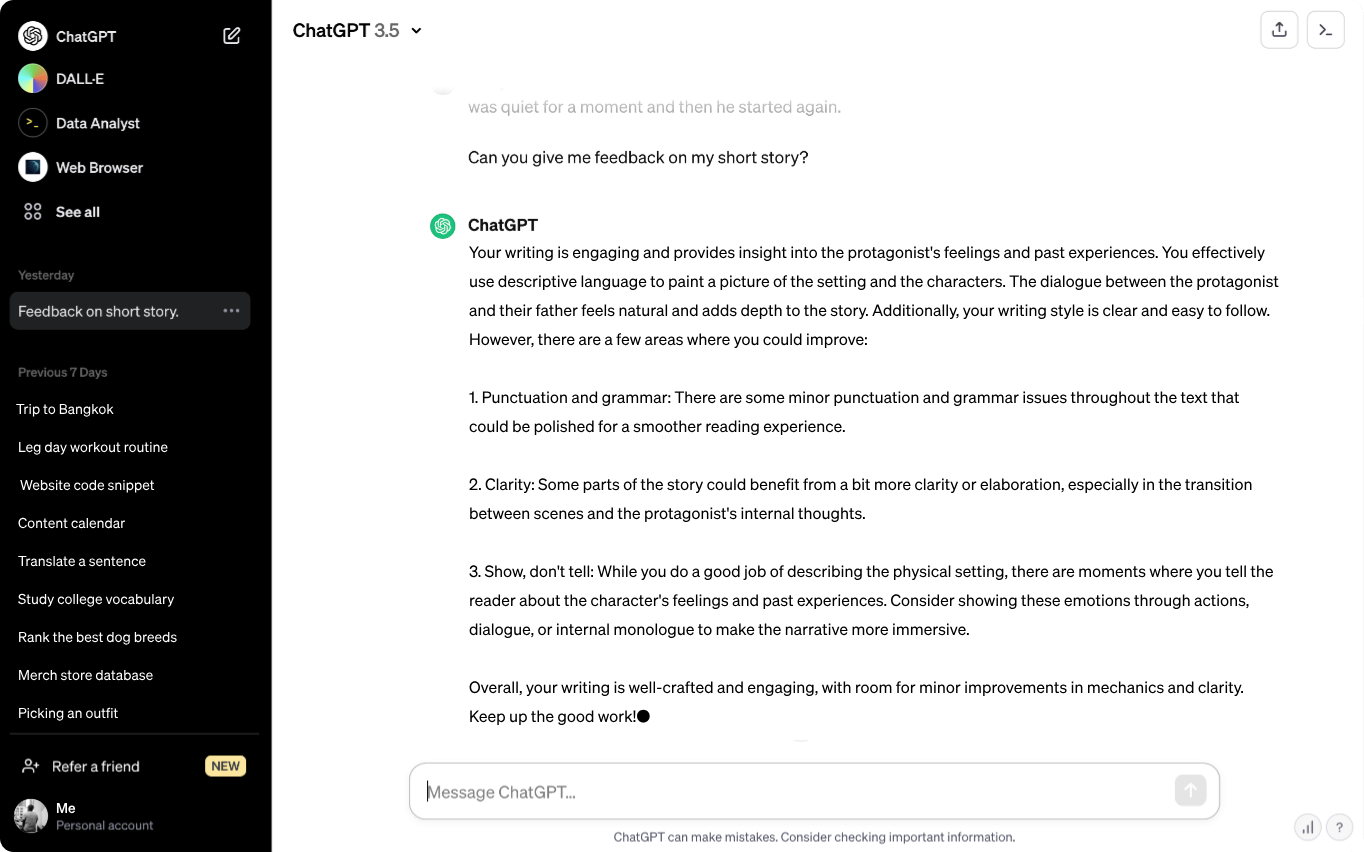
You might be surprised to find ChatGPT in and amongst some of its more niche competitors, but I’d be remiss not to mention it here. As a free AI writing tool (for GPT-3, at least), ChatGPT is one I keep returning to for quick ideas, blog post outlines, and goofy metaphors.
ChatGPT, a chatbot based on Open AI’s GPT model, is what many of the bells-and-whistle-filled tools above are built on and what helps generate the copy that lands in their fancy interfaces.
Learning to prompt ChatGPT takes some doing — I tend to err on the side of providing as much context as possible — but the chat-style interface can be helpful as you refine your ask and tweak prompts as you go.
2. Infographic
About Infographic
Infographics are a combination of images and information that needs to be conveyed. 45% of marketers often use this content marketing trend to convey content quickly.
Here are some statistics that Thu Do Multimedia learned from a recent HubSpot Blog study:
- 56% of marketers who have used infographics say that it is one of the most effective content design trends for them.
- 52% of advertisers plan to invest the same amount of money in infographics in the next year.
- The remaining 38% plan to focus more on infographics in the next year.
Infographics are effective because they are beautifully designed and provide useful information to viewers. An illustration is worth a thousand words.
Great Tools – Just For You!
There is no doubt that infographics are a great way to turn complex data and information into engaging and easy-to-understand graphics. The problem is that while it may seem simple to create an infographic, how do you actually design a professional one?
We have selected the top tools and apps for creating infographics. Some of them are easy to use for non-designers, with ready-made templates and other useful features.
Canva
Canva is a powerful online design tool (and infographic maker) that allows you to create a variety of designs even if you do not have any design knowledge.
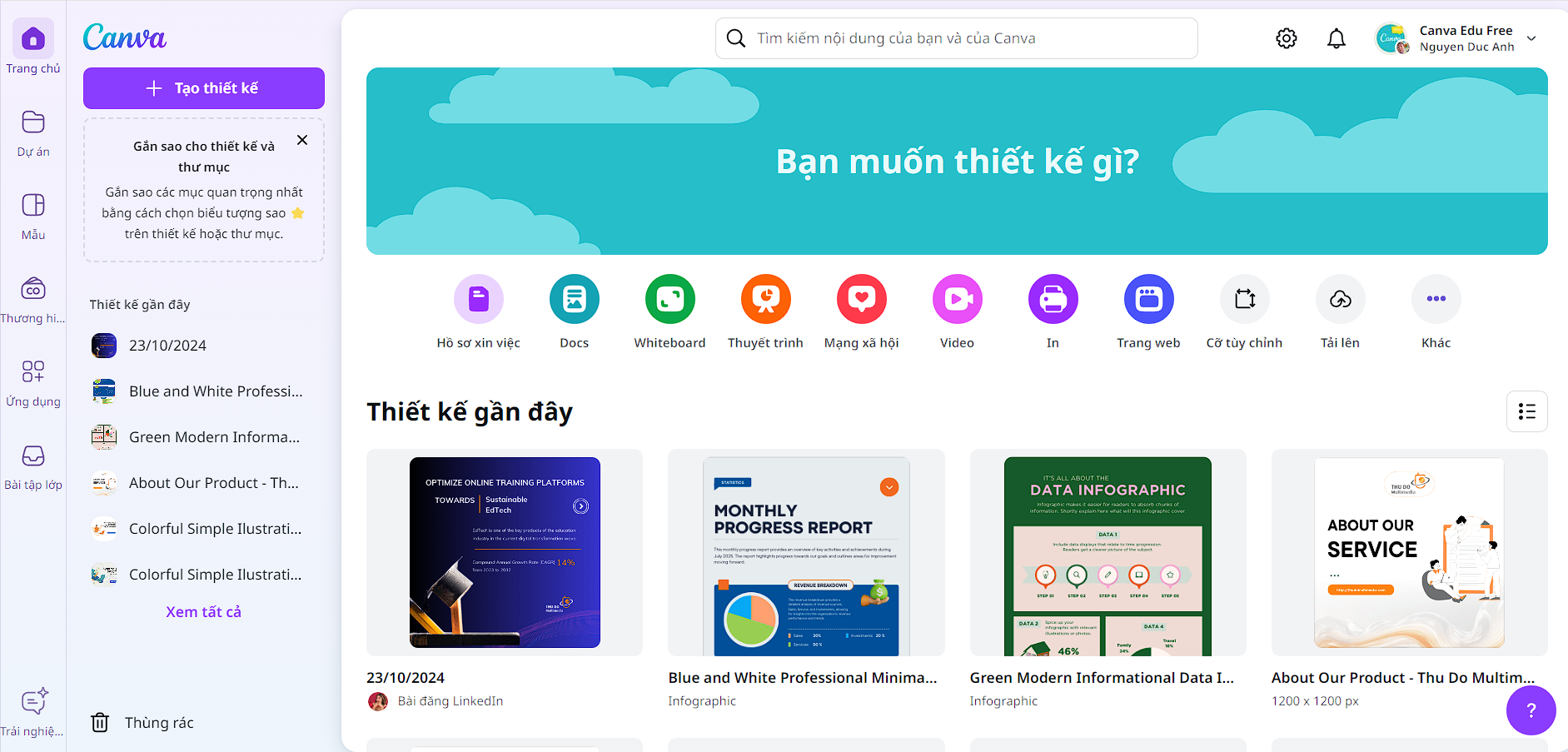
Canva provides a huge range of templates for you to pick from based on your exact design needs. A lot of the templates themselves are free, and some include elements like icons and pictures that you can purchase or replace with your own elements).



Here’s a quick tutorial on how to use Canva for infographic design:
Venngage
Similar to Canva, Venngage offers you a few different options to pick from in terms of what it is you want to create. You will find templates for things like reports, posters, promotions, and of course, infographics.
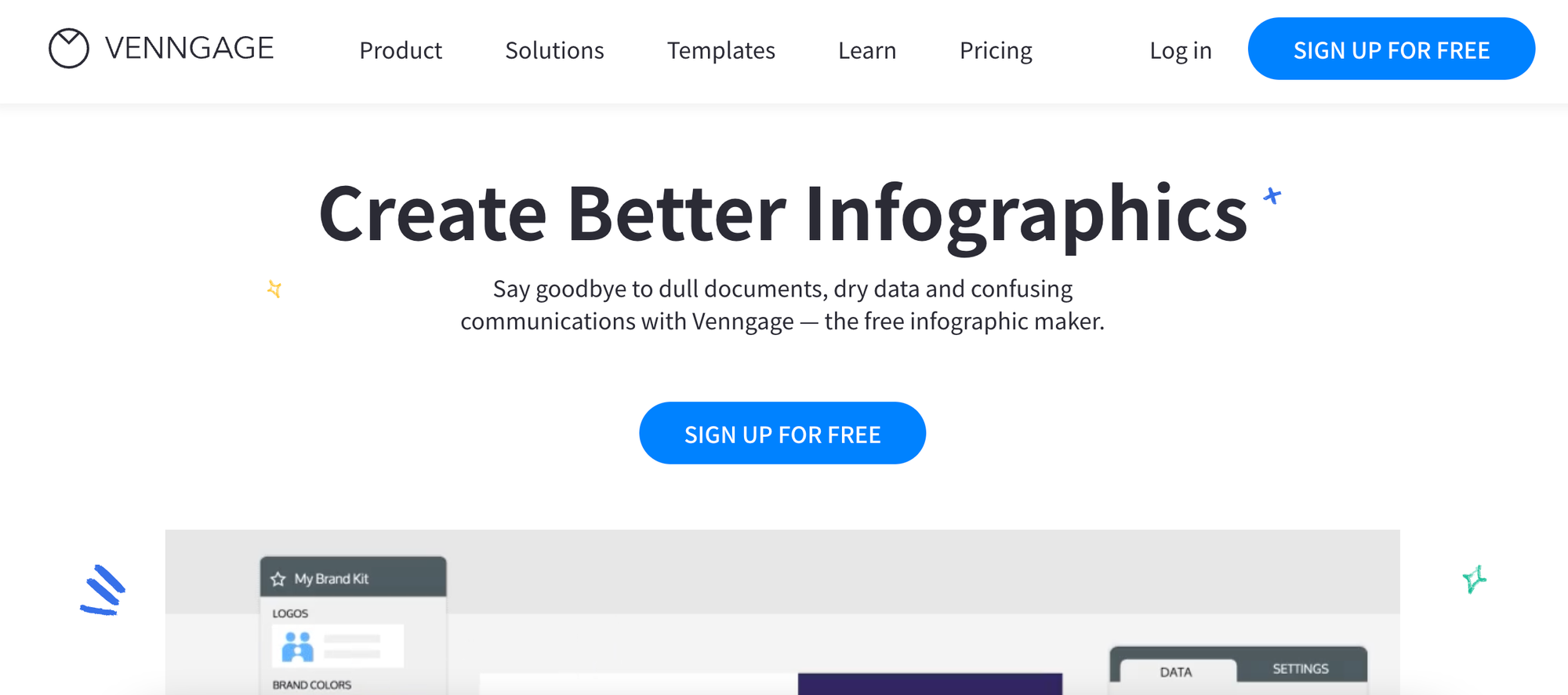

Within the infographic section, you will also find additional options to pick from that tend to deal with particular topics and categories of infographics, like:
- Statistical
- Informational
- Process
- Comparison
- Timeline
- Geographic
- Charts
- Tutorial
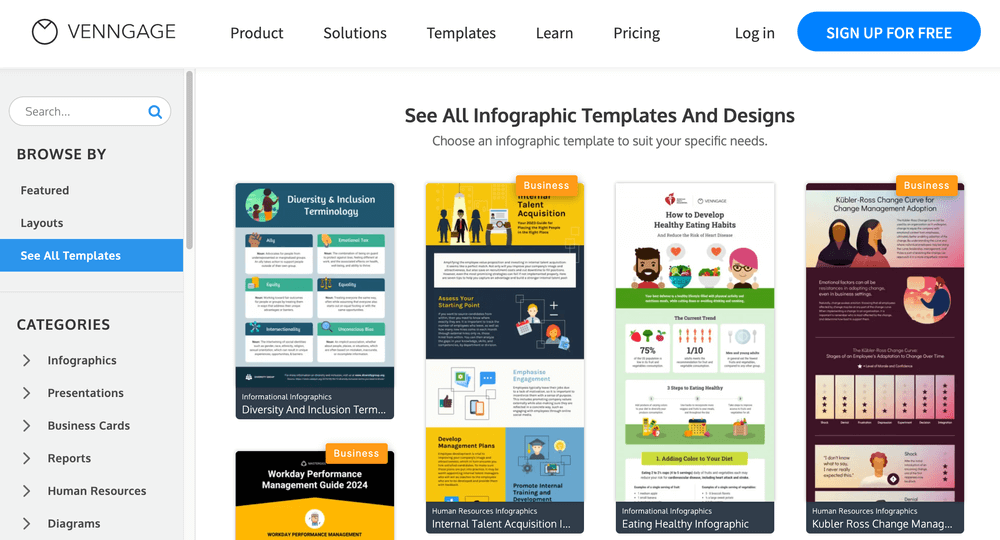

Once you find a template you like, it’s time to customize it! Venngage allows you to insert what they call “Widgets,” which can include things like maps and charts based on the specific info and data you have for your infographic.
Quick Tutorial video for you:
Piktochart
Piktochart is another good option to create different types of infographics. You can pick from a few different formats, including a traditional infographic size (tall and skinny), presentation size (for slide decks), poster, and report.
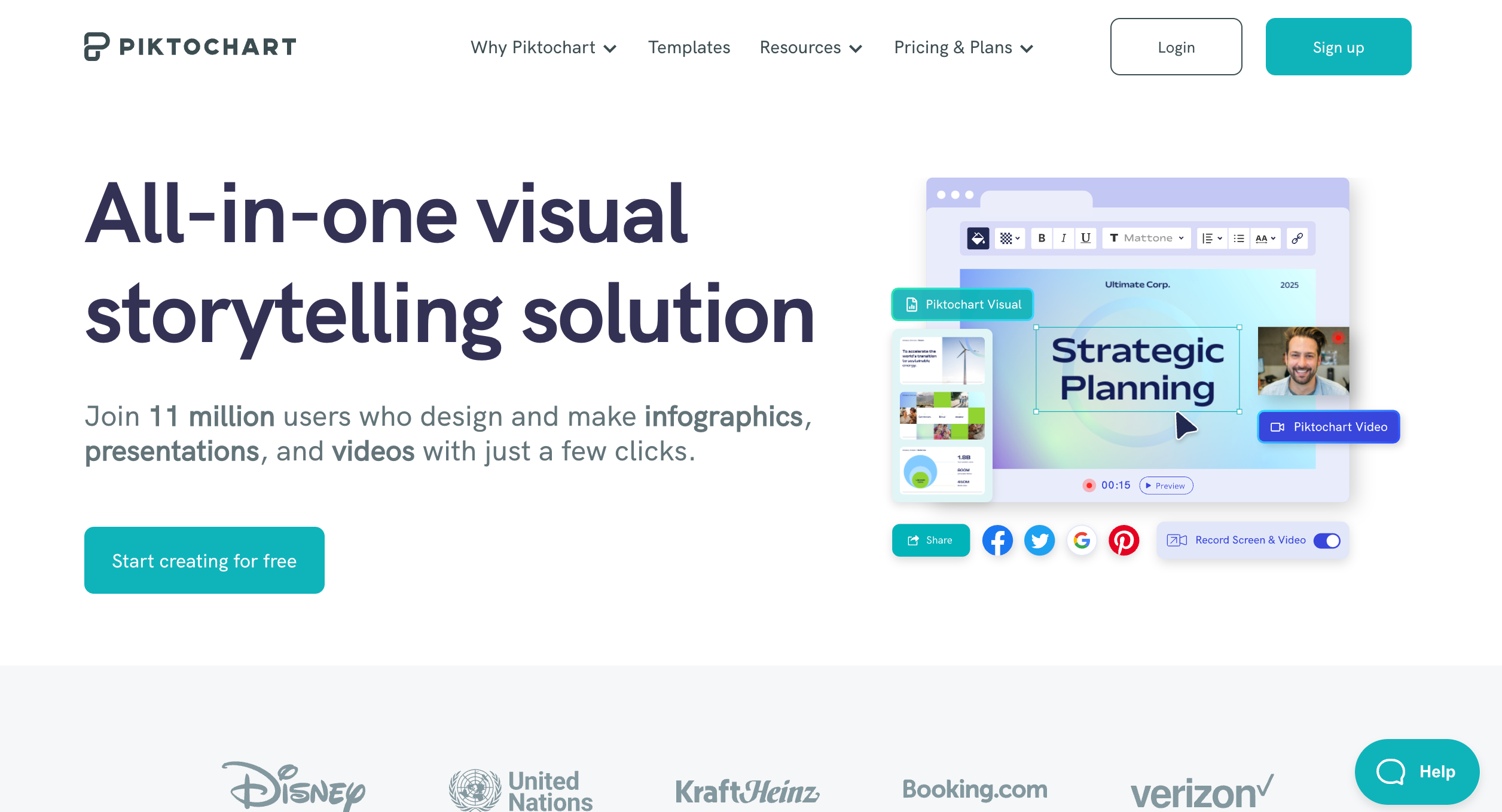

You can then either create your own infographic from scratch or select one of their templates (some are free and others require you to either have a paid plan).
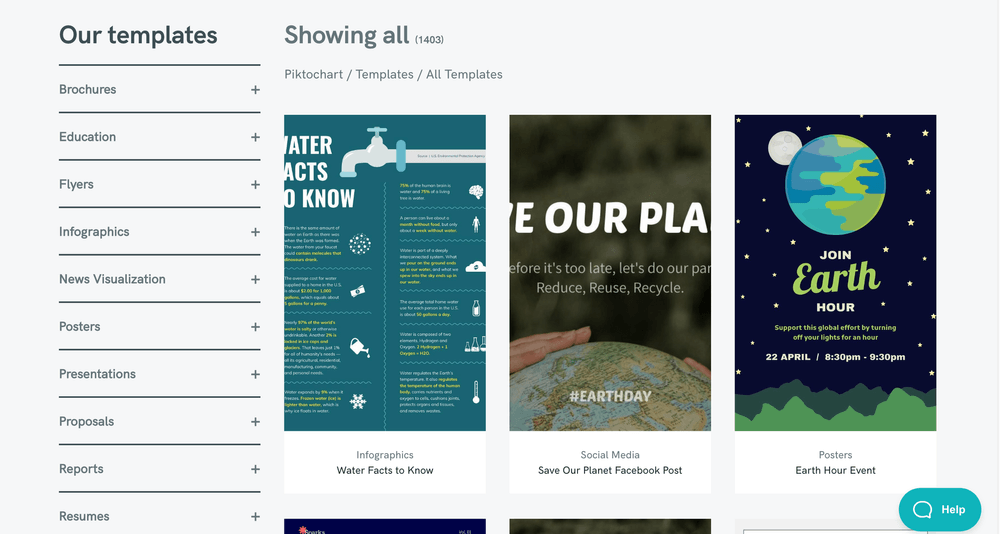

Once you have selected your template, you can simply drag and drop to add any graphic elements and text to your canvas. You can also upload your own images.
Quick video tutorial:
Easel.ly
Easel.ly makes it really easy for you to create infographics. When you arrive on their main page, all you need to do is pick one of the many templates they offer. They also offer a way for you to search their template library by category.
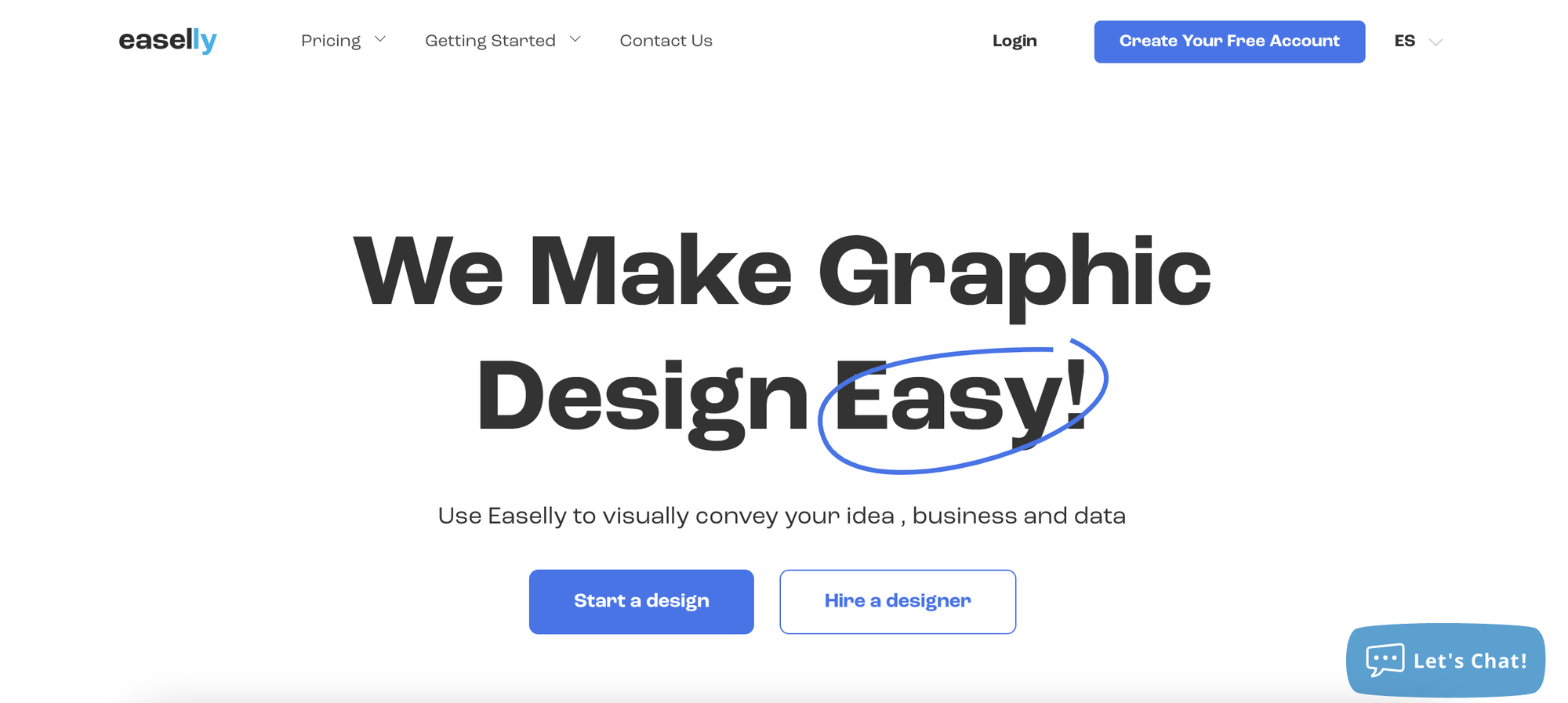

Once you have found a template you like (or even when you start from scratch), you will be directed to a new window where you will be able to customize your infographic however you want. easel.ly provides a variety of tools such as backgrounds, shapes, text, charts, and more.
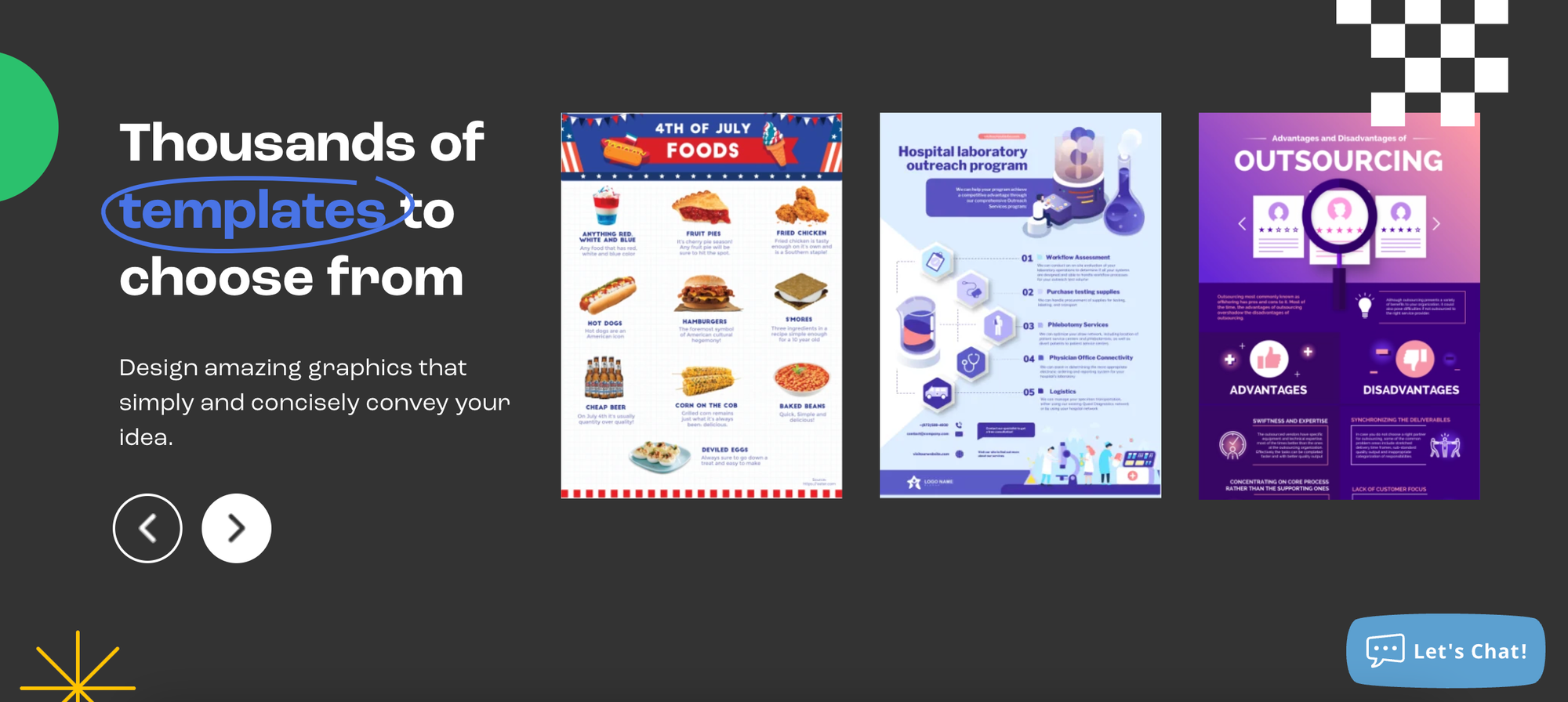

Quick video tutorial:
3. Interactive content – A Must
In the digital age, as people become increasingly connected through online space, the need for interaction has increased significantly.
Content is not just about providing information, but also creating interactive experiences, stimulating curiosity and encouraging users to participate.
Integrating interactive elements such as surveys, comments, sharing, or even mini-games into content not only increases interaction but also collects valuable data about user behavior.
4. The Rise of Social Media Platforms
The proliferation of social media platforms has fundamentally changed the way people consume and interact with content. Increasingly, consumers are turning to social networks like Facebook, Instagram, and Twitter to discover brands, products, and relevant information. This shift has far-reaching implications for content creators and marketers.
To effectively reach and engage audiences on these platforms, it’s essential to adapt content strategies to align with the unique preferences and behaviors of social media users. This includes understanding the latest trends, leveraging visual content, and prioritizing authentic, engaging interactions.
Key considerations for social media content:
- Visual Appeal: Social media is highly visual. Invest in high-quality images and videos to capture attention.
- Short-Form Content: Adapt content to fit the formats popular on specific platforms (e.g., short-form videos on TikTok, Instagram Reels).
- Engagement: Encourage interaction through comments, likes, shares, and polls.
- Algorithm Optimization: Understand the algorithms of different platforms to maximize visibility.
- Paid Advertising: Consider using paid advertising to reach a wider audience and target specific demographics.
By understanding these trends and tailoring your content accordingly, you can effectively leverage social media to connect with your audience and achieve your marketing goals.
5. The Power of Blogs
Blogs have become an extremely important communication channel in the digital age. With the development of the internet, blogs are not only a place to share personal thoughts and feelings but also a powerful tool to convey information and knowledge to the community.
Why are blogs important?
Easy to access
Anyone can create a blog and share information easily. This creates an open space where everyone can contribute their opinions and knowledge.
Diverse topics
Blogs cover all topics, from science, technology to culture and society. This makes it easy for readers to find information they are interested in.
Updated information:
Blogs are regularly updated with the latest information, helping readers always grasp new trends and knowledge.
High interaction: Blogs create conditions for readers to interact with writers through comments, helping to create a community of knowledge sharing.
Search Engine Optimization (SEO):
Professional blogging increases visibility on search engines like Google, helping more people know about your content.
The role of blogging in society
Expanding knowledge
Blogs help readers access many different sources of information, thereby expanding their understanding of the world around them.
Create communities
Blogs help connect people with similar interests, creating communities to share knowledge and experiences.
Stimulate creativity:
Blogging encourages writers to be creative, explore and discover new things
Influence decisions
Blogs can influence consumers’ purchasing decisions and service choices.
In short, blogs are an extremely powerful communication tool, playing an important role in sharing information, knowledge and connecting communities. With the constant development of technology, blogs will continue to develop and become an indispensable part of modern life.
Is there a specific aspect of blogging you want to learn more about? For example, how to build a successful blog, how to optimize your blog for SEO, or the types of blogs that are popular today.
Conclusion
The future of content creation is here. With advancements in technology, creating and distributing content has never been easier or more efficient.
As a content creator, you need to embracing these opportunities can significantly improve your workflow and productivity.
Ready to learn more about the latest content trends and how our products can help you succeed? Leave your information below, and our team at Thu Do Multimedia will be in touch shortly to provide personalized support.


Recent Comments